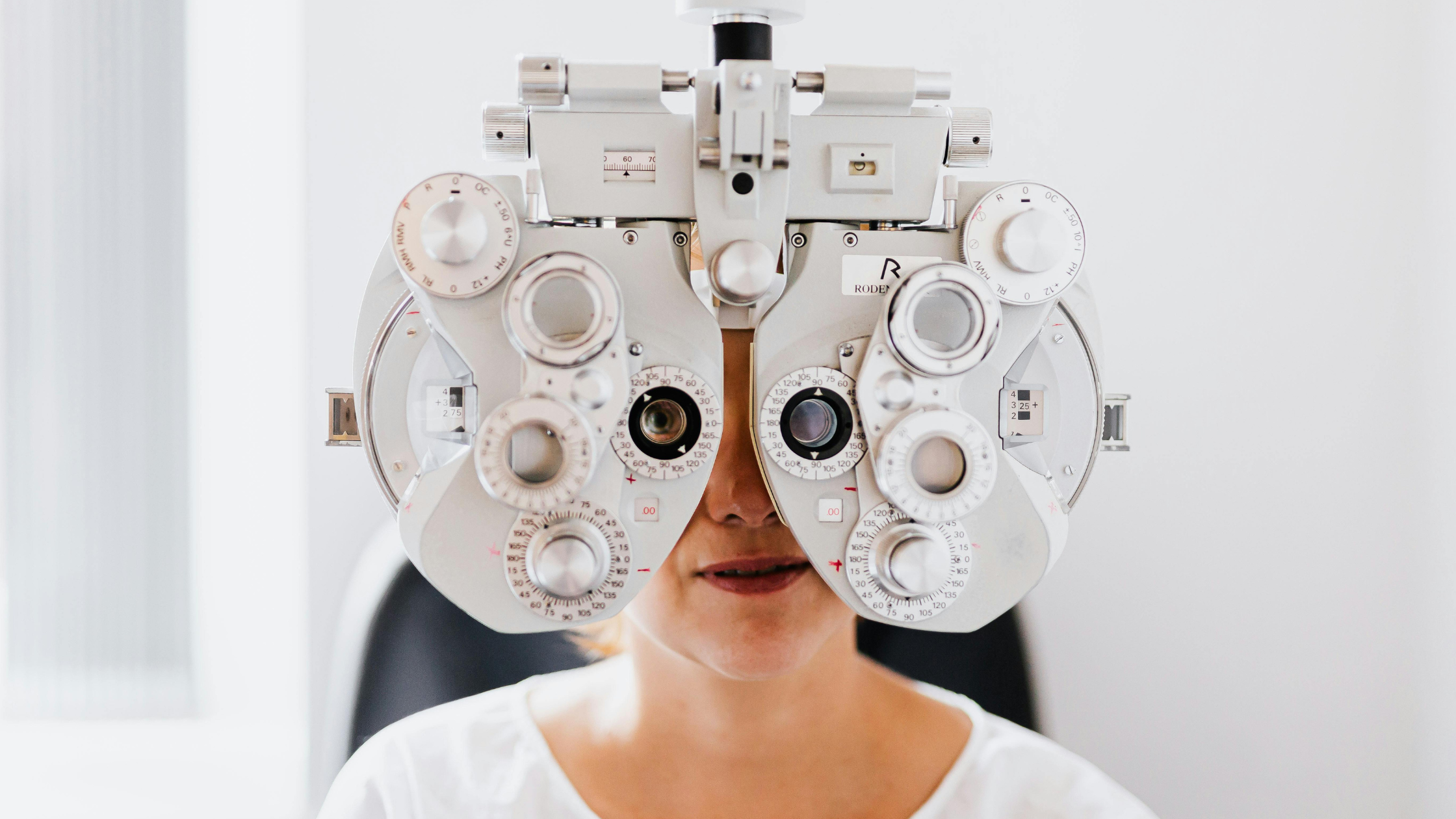Vision health supplements for women over 40 become essential as age-related eye changes accelerate during midlife. Understanding which nutrients protect your eyesight can help you maintain clear vision and reduce your risk of serious eye conditions for decades to come.
Introduction
Have you noticed yourself holding your phone a little farther away to read text, or struggling to see clearly in low light? These subtle changes in your vision aren’t just annoying inconveniences; they’re early signs that your eyes are aging.
Vision health supplements for women over 40 address the specific nutritional needs of your eyes as they face increased oxidative stress, reduced tear production and higher risk of age-related conditions like macular degeneration and cataracts. While regular eye exams and protective eyewear remain essential, targeted nutritional support can make a significant difference in preserving your vision and eye comfort.
The nutrients that protect your eyes work synergistically to combat free radical damage, support healthy blood vessels in the retina, maintain proper eye moisture and preserve the delicate structures that allow you to see the world clearly.
The Silent Threat to Your Vision
Age-related macular degeneration (AMD) is the leading cause of vision loss in adults over 50, and women face higher risk than men. This condition gradually damages the macula, the part of your retina responsible for sharp central vision. Early stages often have no symptoms, which is why AMD is sometimes called a “silent” disease until vision loss becomes noticeable.
Cataracts, which cloud the eye’s lens, affect more than half of Americans by age 80. Women tend to develop cataracts earlier than men, possibly due to hormonal changes during menopause. The cumulative effects of ultraviolet light exposure, oxidative stress and declining antioxidant defenses all contribute to cataract formation.
Digital eye strain has become increasingly problematic as screen time has exploded. Women over 40 are particularly vulnerable because age-related changes in focusing ability combine with the demands of prolonged screen use. Research published in Ophthalmology found that adults spend an average of 7+ hours daily looking at screens, creating unprecedented strain on our visual system.
Dry eye syndrome affects women more frequently than men, especially after menopause when hormonal changes reduce tear production. This isn’t just uncomfortable; chronic dry eye can damage the corneal surface and interfere with clear vision. The condition becomes more prevalent with age, affecting up to 30% of women over 50.
Key Nutrients Your Eyes Need After 40
Supporting your eyes with the right nutrients can make a real difference. Certain vitamins and antioxidants help protect against blue light, improve night vision, and maintain healthy blood flow to the eyes. Below are some of the most important nutrients every woman over 40 should pay attention to for lasting eye health and visual comfort.
Lutein and Zeaxanthin
Lutein and zeaxanthin are carotenoid antioxidants that concentrate in the macula and act as natural “sunglasses” for your eyes. These yellow-pigmented nutrients filter harmful blue light and protect against oxidative damage. Since your body cannot produce them, you must obtain lutein and zeaxanthin through diet or supplementation.
The Age-Related Eye Disease Study (AREDS2), one of the most comprehensive nutritional studies on eye health, found that supplementation with lutein and zeaxanthin significantly reduced the risk of advanced AMD progression. Women with the lowest dietary intake of these carotenoids had the highest risk of developing AMD, highlighting their protective importance.
Astaxanthin: The Powerful Antioxidant for Eye Comfort and Focus
Astaxanthin is a potent carotenoid with exceptional antioxidant properties that supports eye health in multiple ways.
Research published in the Journal of Clinical Biochemistry and Nutrition showed that astaxanthin supplementation improved visual acuity, reduced eye fatigue and enhanced focusing ability in people experiencing digital eye strain. It also supports healthy blood flow to the eyes and helps maintain proper eye pressure.
Anthocyanins: Nature’s Eye Protectors from Bilberry and Blackcurrant
Anthocyanins from bilberry and blackcurrant have long been used for eye health, and modern research confirms their benefits.
These compounds strengthen retinal capillaries, support night vision adaptation and guard against oxidative stress. A study in Molecular Vision found that bilberry anthocyanins helped protect retinal cells from blue light damage.
Vitamin A and Omega-3
Vitamin A is crucial for producing rhodopsin, a pigment that enables vision in low light conditions. Deficiency can lead to night blindness and dry eyes. Beta-carotene, a precursor of vitamin A, also acts as an antioxidant to protect delicate eye tissues.
Omega-3 fatty acids, especially DHA, are structural components of retinal cell membranes. They support tear production, reduce inflammation and may help prevent both dry eye syndrome and AMD. Research in Investigative Ophthalmology & Visual Science found that women with higher omega-3 intake had a significantly lower risk of developing AMD.
The Blue Light Challenge
Modern life exposes us to unprecedented amounts of blue light from digital devices, LED lighting and the sun. While some blue light exposure is natural and even beneficial for regulating circadian rhythms, excessive exposure particularly from screens can contribute to digital eye strain and may increase long-term risk of retinal damage.
Blue light penetrates deeper into the eye than other visible light wavelengths, reaching the retina where it can generate free radicals and cause oxidative stress. The macula is particularly vulnerable to this damage. As we age, the eye’s natural defenses against blue light diminish, making nutritional support increasingly important.
Lutein and zeaxanthin specifically filter blue light wavelengths, providing a protective barrier for the macula. Research suggests that maintaining optimal levels of these nutrients can significantly reduce blue light damage to retinal cells. This protection becomes especially relevant for women who spend significant time on computers, phones or tablets for work or leisure.
Creating a comprehensive eye protection strategy should include both behavioral changes (regular screen breaks, proper lighting, screen filters) and nutritional support. A well-formulated vision supplement that includes multiple eye-supporting nutrients provides foundational protection against the cumulative effects of blue light and other environmental stressors.
Screen Time and Visual Fatigue
If you experience tired, achy eyes after a day of screen work, you’re dealing with digital eye strain or computer vision syndrome. Symptoms include eye fatigue, headaches, blurred vision, dry eyes and difficulty focusing. Women over 40 are particularly susceptible because age-related changes in accommodation (the eye’s ability to focus at different distances) combine with screen demands.
The “20-20-20 rule” provides a simple behavioral intervention: every 20 minutes, look at something 20 feet away for at least 20 seconds. This gives your eye muscles a break from the sustained near focus that screens require. However, behavioral strategies alone may not fully address the oxidative stress and nutrient demands that prolonged screen time creates.
Maintaining adequate hydration also matters for eye comfort during screen use. Digital devices cause us to blink less frequently, which allows tears to evaporate more quickly. Drinking plenty of water throughout the day supports tear production and helps maintain the moisture balance your eyes need for comfortable vision.
Dry Eyes: More Than Just Discomfort
Dry eye syndrome isn’t merely an inconvenience; it’s a chronic condition that can significantly impact quality of life and even interfere with activities like reading, driving and working. The condition occurs when your eyes don’t produce enough tears or when tear quality is poor, causing tears to evaporate too quickly.
Hormonal changes during perimenopause and menopause contribute to dry eyes</a> by affecting the glands that produce the oily layer of tears. This layer prevents tear evaporation, so when it’s compromised, eyes become chronically dry and irritated. Certain medications, autoimmune conditions and environmental factors like air conditioning or wind can exacerbate the problem.
Omega-3 fatty acids help address dry eyes by supporting the production of anti-inflammatory compounds and improving the quality of the tear film’s oily layer. A meta-analysis in Contact Lens and Anterior Eye found that omega-3 supplementation significantly improved dry eye symptoms and tear production. The anti-inflammatory effects of omega-3s also help reduce the eye surface inflammation that often accompanies dry eye syndrome.
Night Vision and Low Light Challenges
Have you noticed that driving at night has become more challenging, or that your eyes take longer to adjust when entering a dark room? Age-related changes in night vision are common and can significantly impact daily activities and safety. The pupils become less responsive with age, limiting the amount of light that enters the eyes in dim conditions.
Rhodopsin, often called “visual purple,” is the light-sensitive pigment in rod cells that enables vision in low light. Your body requires vitamin A to produce rhodopsin, and deficiency can impair night vision. While severe vitamin A deficiency is rare in developed countries, subclinical deficiency may contribute to poor night adaptation in some women.
Bilberry has traditional use for supporting night vision, dating back to World War II when British pilots reported improved night flying performance after consuming bilberry jam. Modern research has provided some support for these traditional uses. A study in Alternative Medicine Review found that bilberry anthocyanins improved dark adaptation and reduced glare sensitivity in people with normal vision.
Supporting optimal night vision requires maintaining adequate levels of vitamin A and ensuring healthy retinal function through antioxidant protection. Women who frequently drive at night or have noticed declining night vision should prioritize these nutrients along with regular comprehensive eye exams to rule out other causes of vision changes.
Creating Your Eye Health Strategy
Protecting your vision requires a multi-faceted approach that combines regular professional eye care, protective behaviors and targeted nutritional support. Comprehensive eye exams become increasingly important after 40, as many eye conditions have no early symptoms and can only be detected through professional examination. Women with family history of eye diseases, diabetes or high blood pressure should be especially vigilant about regular eye care.
Managing other health conditions supports eye health too. Diabetes, high blood pressure and autoimmune conditions all increase risk for various eye problems. Keeping these conditions well-controlled through medication, lifestyle changes and regular monitoring protects your eyes along with the rest of your body.
Nutritional support through a comprehensive vision formula that includes lutein, zeaxanthin, astaxanthin, bilberry anthocyanins and other eye-supporting nutrients provides daily protection against oxidative stress and blue light damage. Think of vision supplements as insurance for your eyes, working behind the scenes to preserve function you might otherwise take for granted until it begins to decline.
Frequently Asked Question
What’s the difference between lutein and zeaxanthin?
Lutein and zeaxanthin are both carotenoid antioxidants that protect the eyes, but they concentrate in slightly different areas of the retina and have complementary functions. Lutein is found throughout the retina but concentrates in the peripheral regions, while zeaxanthin concentrates in the center of the macula where the highest visual acuity occurs. Both filter blue light and provide antioxidant protection, but research suggests that optimal eye health requires adequate amounts of both nutrients rather than just one.
How long does it take for vision supplements to work?
Most research shows that it takes at least 12-24 weeks of consistent supplementation to see measurable improvements in macular pigment density, which reflects lutein and zeaxanthin accumulation in the retina. Some benefits like reduced eye fatigue or improved focusing ability may be noticed within 4-8 weeks. However, the protective benefits of vision supplements are cumulative and work best with long-term, consistent use. Think of vision supplementation as a preventive strategy that provides ongoing protection rather than a quick fix for existing problems.
Can supplements reverse macular degeneration or cataracts?
While vision supplements cannot reverse advanced AMD or remove existing cataracts, research shows they can significantly slow disease progression and reduce risk of developing these conditions. The AREDS2 study demonstrated that people with intermediate AMD who took specific supplements had a 25% lower risk of progression to advanced AMD. For cataracts, antioxidant nutrients may help slow development but cannot eliminate cataracts that have already formed. The key is starting nutritional support early, ideally before serious eye conditions develop, to provide maximum protective benefit.
A Word From Vitamins For Woman
Your eyes are precious, and protecting them deserves the same attention you give to other aspects of your health. While we can’t stop time, we can support our bodies with the nutrients they need to age as gracefully as possible. Taking action now to protect your vision is an investment that pays dividends every single day, allowing you to read, work, drive, enjoy beautiful sights and maintain your independence for years to come. Your future self will thank you for prioritizing eye health today.
References
- Age-Related Eye Disease Study 2 Research Group. (2013). Lutein + zeaxanthin and omega-3 fatty acids for age-related macular degeneration: the Age-Related Eye Disease Study 2 (AREDS2) randomized clinical trial. <em>JAMA, 309</em>(19), 2005-2015. https://jamanetwork.com/journals/jama/fullarticle/1684847
- Nakamura, A., Isobe, R., Otaka, Y., Abematsu, Y., Nakata, D., Honma, M., & Sakurai, T. (2004). Changes in visual function following peroral astaxanthin. Journal of Clinical Therapeutics & Medicines, 20(9), 891-900.
- Kalt, W., Hanneken, A., Milbury, P., & Tremblay, F. (2010). Recent research on polyphenolics in vision and eye health. Journal of Agricultural and Food Chemistry, 58(7), 4001-4007. https://pubs.acs.org/doi/10.1021/jf903038r
- Downie, L. E., Ng, S. M., Lindsley, K. B., & Akpek, E. K. (2019). Omega-3 and omega-6 polyunsaturated fatty acids for dry eye disease. <em>Cochrane Database of Systematic Reviews, 12(12), CD011016. https://www.cochranelibrary.com/cdsr/doi/10.1002/14651858.CD011016
- Ma, L., & Lin, X. M. (2010). Effects of lutein and zeaxanthin on aspects of eye health. <em>Journal of the Science of Food and Agriculture, 90</em>(1), 2-12. https://onlinelibrary.wiley.com/doi/abs/10.1002/jsfa.3785







